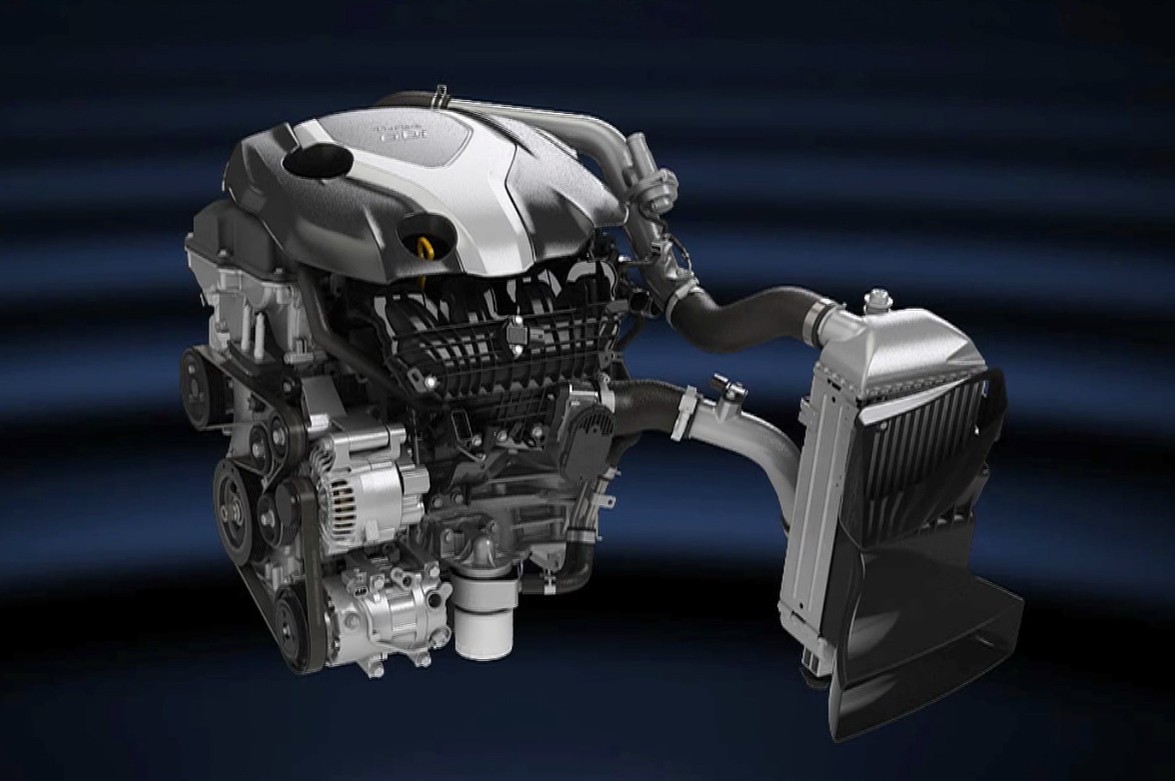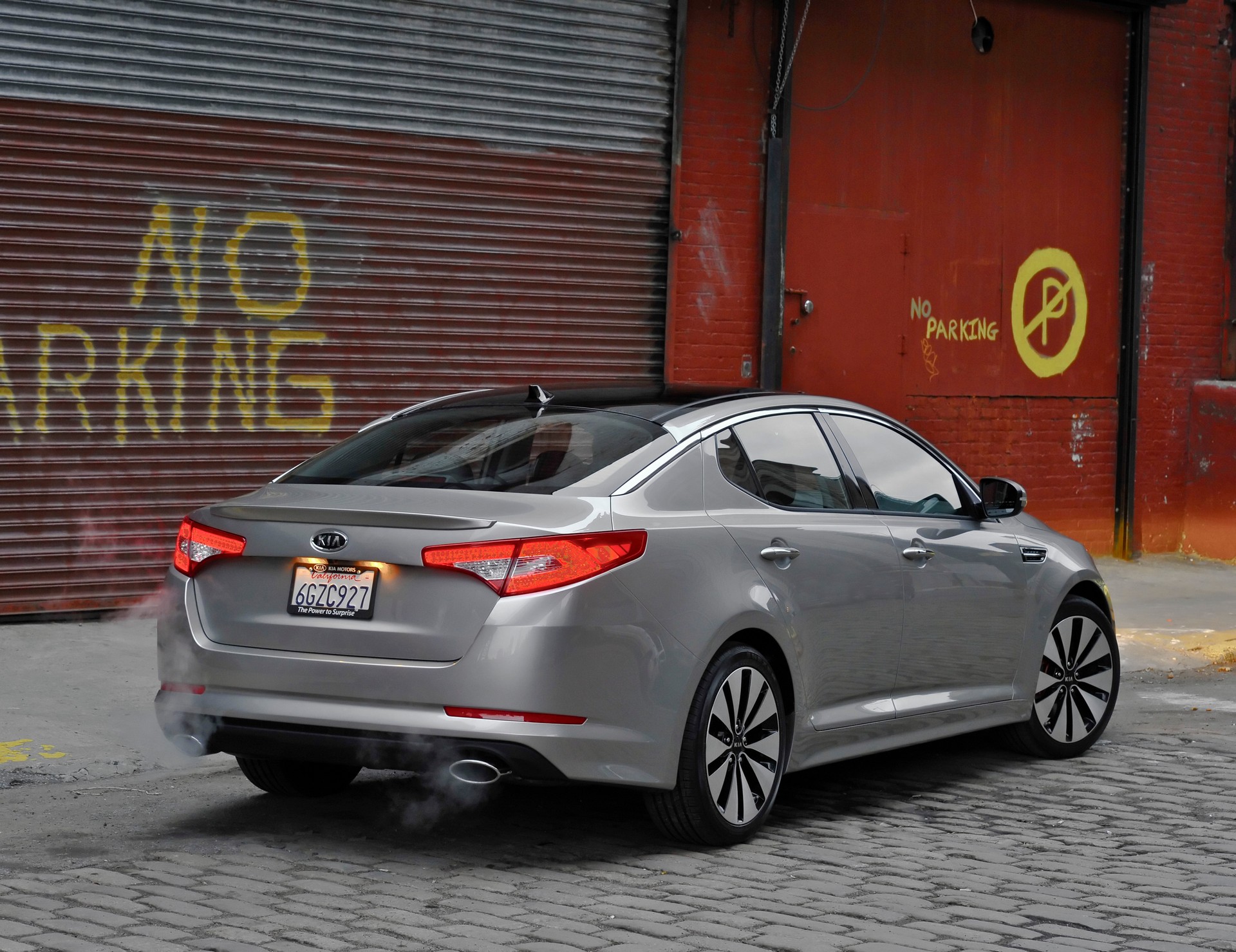The National Highway Traffic Safety Administration has announced Hyundai and Kia could pay a combined total of $210 (£157.2 / €175.6) million in penalties to resolve allegations the company was slow to recall vehicles and “inaccurately reported certain information to NHTSA regarding the recalls.”
At issue are the “untimely” recalls of over 1.6 million vehicles equipped with Theta II engines. The recalls impacted the 2011-2014 Hyundai Sonata and 2013-2014 Santa Fe Sport as well as the 2011-2014 Kia Optima, 2012-2014 Sorento and 2011-2013 Sportage. They were designed to address “manufacturing issues that could lead to bearing wear and engine failure.”
The problems started at Hyundai as they used a “mechanical deburring process to remove machining debris from the crankshaft” of Theta II engines and later a “wet blast process to remove metallic debris from the component.” Despite these efforts to remove debris, the company became aware of engine-related warranty claims in the field.
Also Read: NHTSA Drops A $3 Million Fine On BMW For Untimely Reporting Of Recalls
While the initial recall only targeted 2011 and 2012 Sonatas, it was eventually expanded to include 2013-2014 Santa Fe Sports and 2013-2014 Sonatas equipped with 2.0- and 2.4-liter Theta II GDI engines.
Kia didn’t recall the Optima in 2015 as they contended no action was required as they followed different procedures and had “extremely low” claims of issues in the field. However, 2011-2014 Optimas, 2012-2014 Sorentos and 2011-2013 Sportages were recalled in 2017 due to metal debris which may not have been completely removed from the crankshaft’s oil passages during the cleaning process.
The NHTSA opened a recall query in 2017 to investigate both the timeliness and scope of Hyundai’s engine recalls. It found the company “may be liable for civil penalties … on multiple grounds, including the untimeliness of the recalls, inaccuracies in Hyundai’s DIRs [Defect and Noncompliance Information Reports], and that a required report describing potential safety-related issues contained certain inaccuracies or omissions.”
While Hyundai disagreed with the findings, they entered into a mutually agreed upon consent order to resolve the issue. Kia also disagreed, but settled as well.
Under the terms of the deal, Hyundai is subject to a total civil penalty of up to $140 (£104.8 / €117.1) million. That includes an upfront payment of $54 (£40.4 / €45.2) million as well as the “obligation” to spend $40 (£29.9 / €33.4) million on safety performance measures. If specified conditions are not satisfied, the company could be on the hook for an extra $46 (£34.4 / €38.4) million.
Likewise, Kia could have to pay up to $70 (£52.4 / €58.5) million. Part of that includes an upfront payment of $27 (£20.2 / €22.5) million and spending $16 (£11.9 / €13.3) million on safety performance measures.
Besides the fines, Kia will create a new U.S. safety office which will be headed by a chief safety officer. Hyundai, on the other hand, will build a testing facility in the United States for safety investigations.
Both automakers will “develop and implement sophisticated data analytics programs to better detect safety-related concerns” as well as make organizational improvements to better identify and investigate potential safety issues. They’ll also retain an independent third-party auditor to conduct a “comprehensive review” of their safety practices and compliance with the consent order.
In a statement, NHTSA Deputy Administrator James Owens said “It’s critical that manufacturers appropriately recognize the urgency of their safety recall responsibilities and provide timely and candid information to the agency about all safety issues.”
Hyundai Motor North America’s chief safety officer Brian Latouf said, “Customer safety is our highest priority and we are taking immediate action to enhance our response to potential safety concerns.” He added, “We value a collaborative and cooperative relationship with the U.S. Department of Transportation and NHTSA, and will continue to work closely with the agency to proactively identify and address potential safety issues.”








